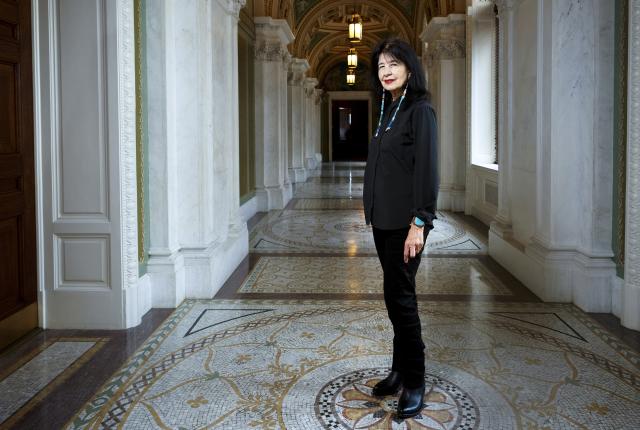DURING TIMES OF SOCIAL DISRUPTION, POETS THRIVE. Their ethereal language unravels the incomprehensible and weaves it into something more of us can understand. It was during such a time, in 2019, that Muscogee (Creek) Nation writer and performer Joy Harjo was appointed the 23rd poet laureate of the United States, an honor she held for a rare three terms, which ended in April. As the first Native American to fill the role, she strived to help guide the nation through season upon season of political divisiveness, racial injustice, and a global pandemic. Her work included a digital project featuring 47 contemporary Indigenous poets. Author of Poet Warrior, Crazy Brave, and An American Sunrise, Harjo attended the Institute of American Indian Arts (IAIA), in Santa Fe, during the 1960s, when it was a visionary high school. New Mexico is where she wrote her first poetry, she says, and in the years since, she’s spent as much time here as in her native Oklahoma. This month, she joins a galaxy of authors, including Margaret Atwood, Sandra Cisneros, John Grisham, and Colson Whitehead, for the inaugural Santa Fe Literary Festival.
In being a poet, you’re using words to go where words cannot reach.
We’ve learned how crucial poetry has been during this time. Many people have turned to poetry as they start to lose heart or get worried or confused—or grief-stricken.
Being named as the U.S. Poet Laureate was major for Indian Country. It brought a different image: that Natives can be poets.
I decided that when I got to the end of my life, I wanted to help Native people be seen as human beings.
Sandra Cisneros and me, we’ve come up in poetry and in literature in a way that few Indigenous women have. There was nobody really doing what Sandra does or what I do.
I came to poetry because I wanted a different language. That’s part of what I do in poetry, unfold that map that was placed in my heart.
I went to IAIA in the late 1960s. I didn’t have anything to compare it with. You know, I was coming as a kid from Oklahoma, and students were coming there from all over.
You bring talented Native students from all over the country and give them freedom and materials and say: Here’s the place in which you can create and here’s a place where you can be artists and feel strange together.
Look at the late 1960s and very early ’70s. There was a big shift in thinking, in trying to break away from patriarchal, colonialist patterns.
As Native Americans, we were beginning to see ourselves as part of an immense, active artistic field, in which our Nativeness was a positive, not a negative. We began to see that we had something to offer. And we did it as a generation.
Poet Warrior becomes a kind of a character, another kind of metaphorical poetic manifestation of a certain energy.
See for yourself
Learn more about Joy Harjo. The Santa Fe Literary Festival is May 20–23, 2022.


